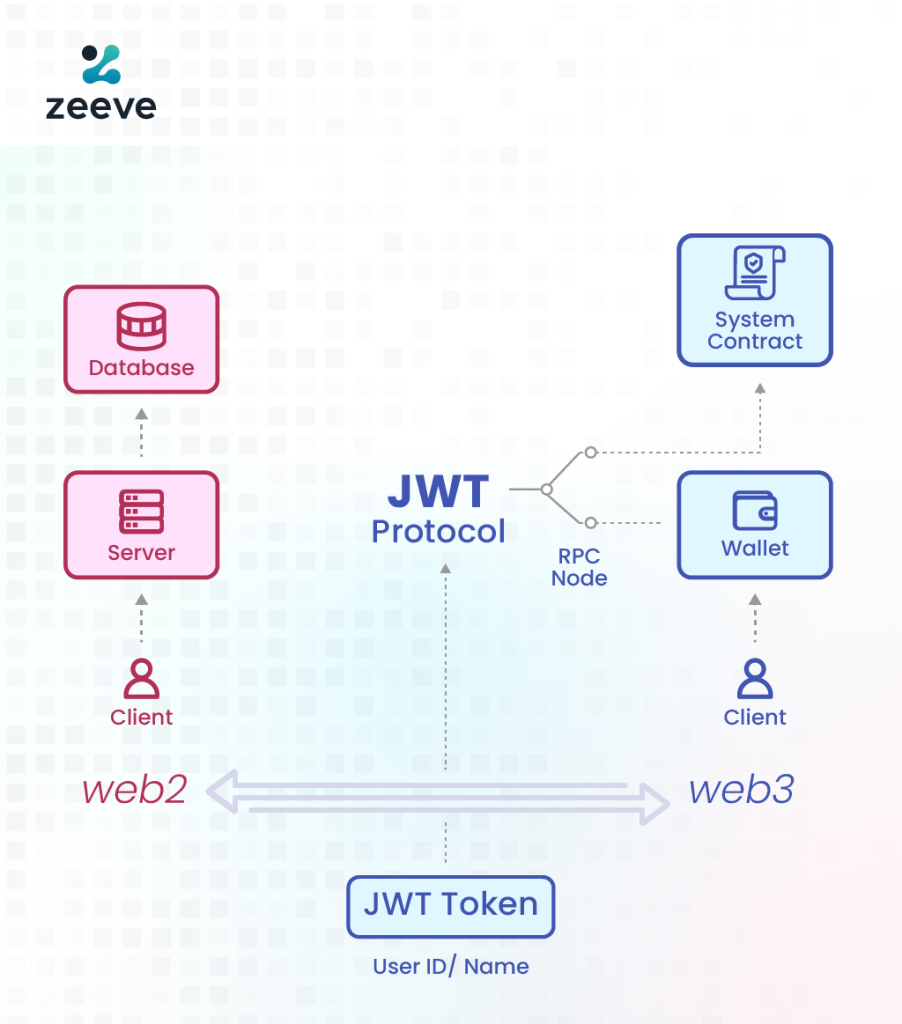Enterprises operating in the Web2 space could benefit at large when they transition from Web 2 to Web 3 but they have their own challenges like inability to interoperate with partner networks, development challenges and accessibility making operations complex. For example, Web3 applications are mostly written on Solidity, which undoubtedly makes the UI/UX quite complex for a non-native user. So, if enterprises wish to transition to Web 3, they have to build everything from the ground up because they are using a different programming language for their application.
This undoubtedly creates a technology gap. In addition to this, since when it comes to operating atop a decentralized solution, a continuous interaction between private-public blockchains seems difficult. And to further aggravate the situation, scalability and TPS becomes another big elephant in the room that needs attention.
In this regard, the Near Protocol has introduced the BOS or Blockchain Operating System, which provides the necessary infrastructure and services which shall help enterprises to use their existing infrastructure to function on top of the blockchain without sacrificing speed, scalability, cost-efficiency and freedom to interoperate.
To put that into perspective, Near Protocol could fill-up the gap of the enterprises who wish to transcend from Web2 to Web3 but they fear that the challenges outsmarts the benefits when it comes to provide the same level of experience the users go through in Web2 when they move to Web3.
How Near Protocol Aims To Achieve the Impossible?
Simplifying Accounts and Transactions
We have so far been accustomed to using account names and numbers but Web3 introduced the concepts of public keys which are 32 digits alphanumeric characters. Near protocol restores the old methods where you can use the same account name while operating in a Web 3 environment.
In addition to this, it will also introduce Hierarchical accounts structure which shall allow management of multiple smart contracts from a single parent account. In this way, restoring the balance of managing multiple operations from a single checkpoint. For example, you can create one master-account and designate rules of payments to multiple accounts with session keys that shall trigger transactions on its own through smart-contracts. This eliminates over-dependency on manual tasks through automation.
Furthermore, Near Protocol also introduces the functionality of storage of data off-chain which can be leased and not bought. The fusion of validating transactions with off-chain storage eliminates the need for developers to continuously manage and monitor the network Instead, the smart-contract can self-function on its own and any excessive gas units paid will be refunded back to the network staking node designated with the task of managing the network via smart-contracts.
Above all, these smart-contracts can be written in Rust & JavaScript and stored in WASM with a FunctionCall transaction to verify the modification of contract state. So, enterprises need not have to additionally hire Solidity or Vyper developers who might charge exorbitantly for the services. And these smart-contracts would perform functions based on the significance of the transaction. For example, In the Account Call function, it shall issue a FunctionCall transaction, which shall create a new transaction and modify the state of the blockchain, hence a larger fee/gas must be paid.
But when the need for smaller tasks like validating a data arises, the need to pay the same amount of fees would make the enterprise’s products or platform, incompetent. To deal with that, Near Protocol introduces a smart contract view call, which does not modify the state of the blockchain rather allows for the execution of a method. When such arrangements are made at the time of querying data, the users need not have to pay higher fees, rather a fixed percentage of fees is already designed for the protocol and any excessive gas fees are refined to the staking account for the management of the ecosystem. This is extremely important when enterprises wish to transition to Web 3 because they can push lesser significant transcations off-chain to help the ecosystem sustain in a decentralized setup.

Simplifying Clients Integration
Enterprises refrain from implementing blockchains in their operations out of concerns with respect to high costs for querying every action within the ecosystem. Furthermore, the wallets used on Near Protocol are Web based, meaning it is integrated using HTTPS. So for Web applications, it is relatively simpler, however, when it comes to mobile or desktop interface, things become complex.
If we see the current process, there’s continuous interaction between the client and the wallet. This process is very complex for small transcations where we just need to query for information. Near Protocol has worked upon this flow through Two Access Keys: Full keys and Functional Call Keys. Full Keys would sign for transactions and Functional Keys would simplify the UX by attaching themselves to a specific functional contract. With such a contract, sub-optimal functions can be performed like querying for data through the functional keys in the following manner. So, the below given process makes querying for small/lesser significant data appealing and sustainable for enterprise adoption.
Simplifying Ownership
In the basic Web 2 model, a client-server equation is under play. This leads to over-exercise of control in the hands of centralized servers like Apple and Google that act as intermediaries and charge hefty fees for the services delivered for querying data . In this way, there should be two data-sets one for the Web 2 Server and the other one for smart-contract for interaction. This process makes the entire operation extremely complex because there’s continuous too and fro between decentralized applications and centralized servers, which would take the course of oracles to interact with the system.
Now, what the Near Protocol does here to simplify ownership, authentication and authorization while interacting with Web 2 and Web 3 applications is using the JWT Token. The JWT Token will be used as a hybrid model which shall work both as an oracle as well as a Web 2 DB authenticator. The Near Account will be used for both mobile and non-mobile clients. In this model, simply the user ID/password is enough to bridge authentication and perform the function on behalf of both applications active in the Web 2 space and protocols functional in the Web3 space.
Through the use of the Near Protocol, the information flow for enterprises at the time of querying data will be much easier as shown in the above image.
How can Zeeve help you build with NEAR protocol?
Zeeve provides access to enterprise-grade, high-performance dedicated Near Blockchain nodes, both full nodes and Validator nodes with near instant deployment support. Get 24*7 monitoring, advanced analytics and alerts. Zeeve makes sure you enterprises cut down significantly on the time required to go into production with minimum set up costs and also saves you on recurring maintenance costs. Connect with us today, and see how Zeeve can simplify your NEAR Protocol experience.
As it is evident from the facts that 30% of the Global GDP should be moving to blockchains by 2027 and enterprises can leapfrog to the next transition in their operations from a Web2 to Web3 space.























